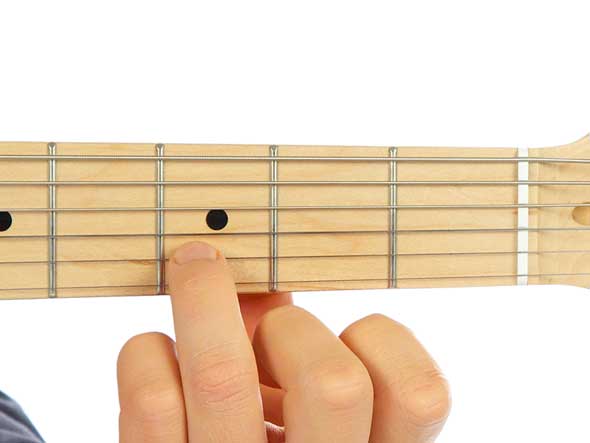
Notes on the Second String
The B Note



To play the note B, pick the open 2nd string.
The C Note



Play the C note with the first finger of your left hand just behind the first fret of the 2nd string.
The D Note



Play the D note with the third finger of your left hand just behind the third fret of the 2nd string.
Notes written above the middle line of a staff usually have their stems going down. Notes written below the middle line of the staff usually have their stems going up. The stem for the B note can go up or down.
The Half Note

This is a half note. It has a value of two beats.
There are two half notes in one bar of * time.
One half note is equal to two quarter notes.
One of the ways expression is created in music is by using notes of different values (lengths). Music is like a language, there are short sounds, longer sounds, emphasised sounds and silences. These will all be introduced in the course of the book.
The following example contains both quarter notes and half notes. Remember to count out loud as you play until you can play the example easily and evenly. Once again, it has been recorded using an overdriven sound. You can choose to use either a clean sound or an overdriven sound for any example.

The Whole Note

This is a whole note.
It lasts for four beats.
There is one whole note in one bar of * time.
This example uses whole notes, half notes and quarter notes. It contains all the notes you have learnt on both the first and second strings. Remember to practice both naming the notes and counting as you play.

